First published February 2019 | Words and photos by Vietnam Coracle | 31 comments
This post was last updated 6 years ago. Please check the comments section for possible updates, or read more on my Updates & Accuracy page.
PREAMBLE | GUIDE | COMMENTS | RELATED POSTS
If you’ve travelled or lived in Vietnam, you’ll have noticed how much plastic there is: both in daily use, and scattered across the cities, towns, villages, countryside, beaches, forests and waterways. Almost everything, it seems, comes in a plastic container, cup, box, or bag – sometimes all of these in one, like a Russian doll: a plastic cup, in a plastic carry bag, with a plastic straw, for example. Much of this plastic is single-use: it’s used once, then thrown away. What’s more, when it’s thrown away, it’s often simply discarded on the streets, on the sidewalks, on the beaches, in the seas and rivers, and in the forests. Even when plastic is thrown into a bin, its destination is, more often than not, a landfill, where it sits smoldering under the tropical sun, while slow flames attempt to burn it away, releasing toxic fumes. Some plastic is recycled. This is a global problem, but the visible build-up of plastic in Vietnam’s cities, countryside, and waterways over the years I’ve been living here is shocking and very apparent. Individuals, corporations, governments – we’re all to blame for the mess we’re in and responsible for redressing it. Recently, like millions of people around the world, I’ve made minor attempts at reducing the amount of single-use plastic I consume during my travels and my daily life. This is only a beginning, but I think it’s worth sharing my experience so far. The idea is to make my life and travels in Vietnam just a bit more sustainable and environmentally friendly with some simple, easy, cheap, and, in my opinion, aesthetically pleasing, adjustments.
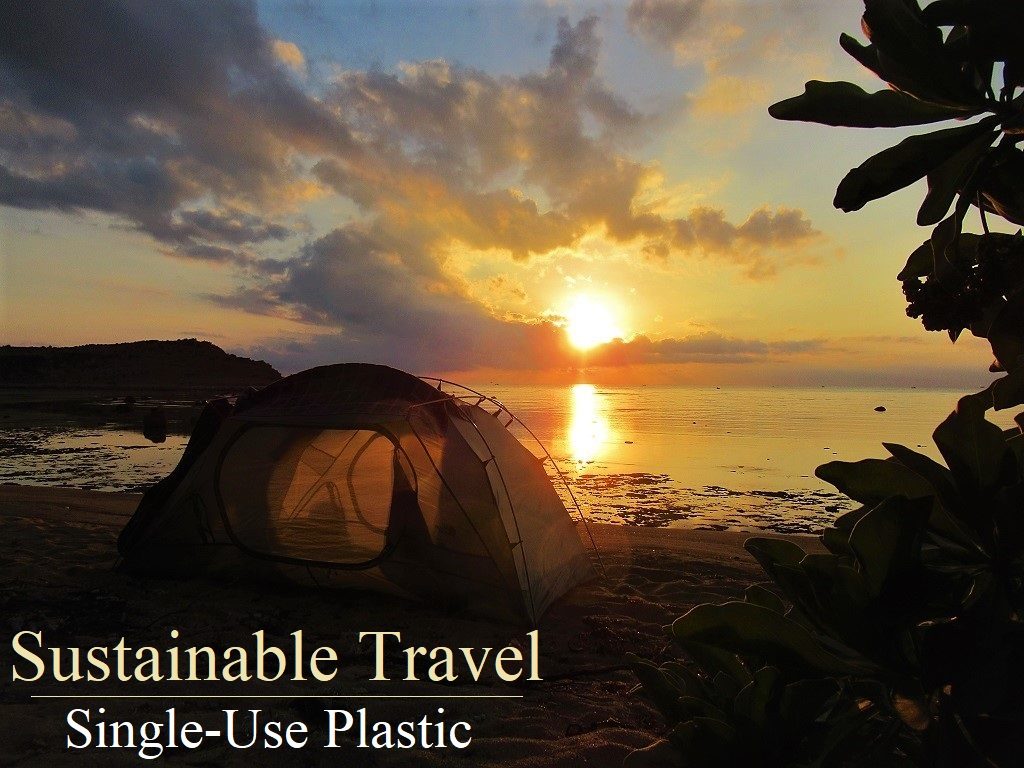
[Back Top]
GUIDE: TRAVEL & SINGLE–USE PLASTIC
In this article, I’ve written about some of the changes I’ve made, or am making, to the way I travel and live in Vietnam. As mentioned in the introduction, these changes are very simple, very minor, and still very new to me. But, it’s been an interesting experiment so far, and I’d like to share my experiences. I’ve organized the following article into several sections. Click a section from the contents below to read more about it.
Please note: I encourage discussion in the comments section at the bottom of this page. But, if you want to point out that the resources & approaches laid out in this article are counterproductive, a waste of time, or cause more problems than they solve, please do so in a way that’s not patronizing, condescending, rude or inflammatory. Keep it focused, polite and to the point: that way, you may enlighten me (and other readers & travellers) so that I may learn something new or change the way I do things. Any comments that don’t come up to these standards will not be published.

CONTENTS:

An informal landfill by the ocean on a Vietnamese island: most of the trash is single-use plastic
[Back Top]
Travel & Sustainability:
Travel isn’t a particularly sustainable hobby or profession. A flight alone is a huge carbon footprint, and then there’s all the other petrol-fueled transportation along the way. Single-use is a staple of the traveller’s lifestyle – the drinks in plastic cups by the roadside, the polystyrene boxes and plastic cutlery for take-out food, all the plastic, single-use items in hotel bathrooms: toothbrushes, combs, sachets of shampoo and shower gel, vanity kits. But I genuinely think travel can be a force for good. For me, personally, it really has broadened my world view: my social and intellectual context has grown as a direct result of travel. What and who I care about has transformed, and continues to change, as a direct result of travel. I wouldn’t have thought about certain things – issues, peoples, problems – without travel. Among these is the environment. Without travel, I don’t think I would have seen, felt, or understood the impact and affect of, for example, logging, deforestation, industrial pollution, fishing, agriculture, and single-use plastic, to name just a few. In my life so far, I’ve not been an eco-warrior, but travel has increasingly turned me into an eco-worrier. I don’t consider travel to be passive, destructive, or just about taking. I think travel can be constructive, instructive, and enlightening. By cutting down on my personal consumption of single-use plastic, I’m just acting, finally, on something that has constantly confronted me over the years I’ve been travelling in Vietnam: personal trash and how it’s discarded.
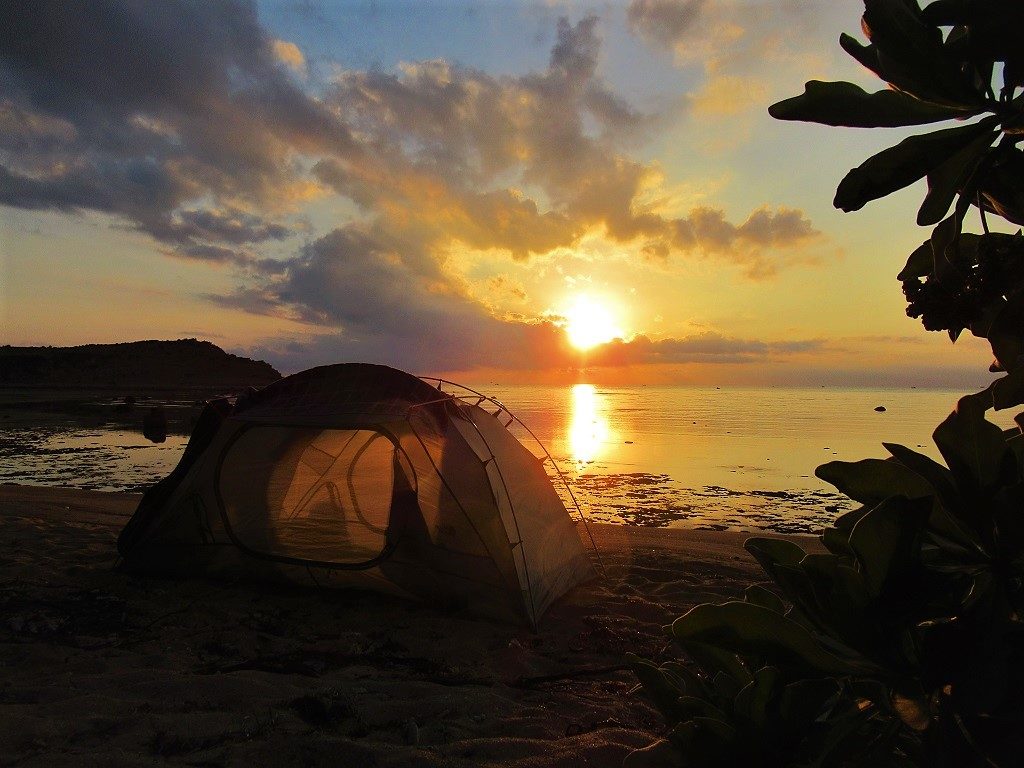
Travel broadened my world view & increased my awareness of many issues, including the environment
Products I Use:
Below is a list of some of the reusable and sustainable items I’ve started using on a daily basis in Vietnam: both in my home city, Saigon, and during my travels across the country. As mentioned before, these are just small, simple changes, but they have had a significant impact on reducing the amount of single-use plastic I consume each day. What’s more, it’s been relatively easy to integrate these products into my daily routine, and I’ve enjoyed using them and have even found them superior in many ways to the less sustainable options I previously used (see Advantages and Disadvantages).

Disclosure: I have no affiliation with the products or companies mentioned in this article. My content is always independent: I do not receive payment of any kind in exchange for writing about any company, services, or products.
Click an item from the list below to read more about it:

Reusable & sustainable products for daily use are cheap, easy to use & readily available
There are several kinds of reusable straws, all of which are very inexpensive. I choose to use the metal ones, because they are the most robust, long-lasting, practical, easy-to-wash and, in my opinion, stylish of the types available. I much prefer the metal straws over the bamboo ones and other alternatives – they even make drinks, especially cold ones, taste better. I use my metal straw for iced coffee, fruit juices, vegetable smoothies, and gin cocktails. As long as I have my metal straw with me, I don’t use any single-use plastic ones. I also have a little brush for cleaning my straws. (More about reusable straws in Advantages and Disadvantages, and Where to Buy them).

I use a purple metal straw: I wash it with a straw-cleaning brush, and keep it in a cloth pouch
Reusable Plastic Food Box:
My plastic food box is durable, compact, light-weight, and well-sealed. Just like any Tupperware box, it’s great for storing food. I use my plastic food container for take-out meals, especially lunches in Saigon, when I take it to my local vegetarian restaurant, fill it to the brim with veggies, then take it home, empty the contents on a plate, and put two poached eggs on top. With this reusable food container, I no longer have to use the polystyrene boxes that all take-out food in Vietnam comes in (not to mention the plastic bag which holds the polystyrene box). (More about reusable plastic food containers in Advantages and Disadvantages, and Where to Buy them).


I use a small, durable, easy-to-seal plastic food container that I keep take-out food in
Hot/Cold Insulating Thermos:
My insulating thermos is well-made, tough, and portable. I chose it carefully so that it’s just the right size for a cup of hot or iced coffee or chilled juice, and it has a hole in the top for my metal straw – very convenient when you’re on the go. It keeps my drinks piping hot or ice-cold for hours. By using my thermos, I’ve cut out all of the single-use plastic cups that take-out coffee, juices and smoothies are served in across Vietnam. (More about my thermos in Advantages and Disadvantages, and Where to Buy them).

My thermos flask is sturdy, compact & well-made; I use it for take-out coffees & juices
Reusable Cloth Bags:
I have two cloth bags: one which I use to carry my thermos and my straws, the other I use for carrying my food box. The bags are soft, light, and fold down very small. When I go out, I put the smaller cloth bag, with my thermos and straws, into the larger cloth bag, with my food box: thus, I have a kind of ‘reusable kit bag’. I also use these bags are alternatives to plastic shopping bags whenever I go to the market or supermarket. Both my cloth bags are easily washed. (More about my cloth bags in Advantages and Disadvantages, and Where to Buy them).


I have several cloth bags & handkerchiefs for carrying & wiping my reusable items
Advantages:
Apart from the obvious environmental advantages of using these products (which are huge, even on an individual scale), there are other positive aspects that I’ve noticed, which I’ve explained below. I’ve also included some notes about how to avoid being served single-use items in day-to-day situations, such as at a local cafe or rice eatery. (For details about where to purchase these items, see Where to Buy them).
Click an item from the list below to read more about it:

Flotsam & jetsam washed up on a Vietnamese beach: much of it is single-use plastic
I like my metal straw. I think it’s an attractive item: it’s hardy but pretty, functional but stylish. I enjoy it as I would a portable gadget or piece of jewelry: I like ‘wearing’ it, using it, sporting it. I feel attached to it, as I might feel about a watch or a ring or any item that one wears on a daily basis. What’s more, it works perfectly. Being a straw might seem a simple function, but somehow my metal straw performs that function better than any other straw I’ve used. The cold metal is satisfying on my lips: it actually makes cold drinks – iced coffees, fruit juices, vegetable smoothies, cocktails – taste better: more chilled. I love its compactness, portability, utility, durability; I like the colour and the way it shines; I like the fact that it’s my straw: it’s personal, and the more I use it, the more history I have with it, the more personal it becomes. And, of course, I like the way it stops me from using all those plastic straws of the past. How many thousands of single-use plastic straws – all of which are now probably breaking down into particles in the ocean – had I consumed before my metal straw: in bars, coffee shops, juice vendors? It wouldn’t be that difficult to calculate. Take an average day in my home city of Saigon, or a day on the road travelling by motorbike: I probably consume three coffees and three juices daily. That’s at least six plastic straws a day. Multiply that by 365 for the year and again by 13 (for the number of years I’ve been in Vietnam) and we’re talking about tens of thousands of plastic straws: used once, then thrown away. (For details about where to purchase reusable straws, see Where to Buy them).
*Note: In order to make sure you don’t get a plastic straw with your drink, say ‘Tôi không cần ống hút‘ (I don’t need a straw). Most staff or street vendors will understand. However, you need to say it when ordering, because it’s too late once your drink arrives with a plastic straw: if you say ‘no’ then, the straw will likely be thrown away anyway, without any use at all.
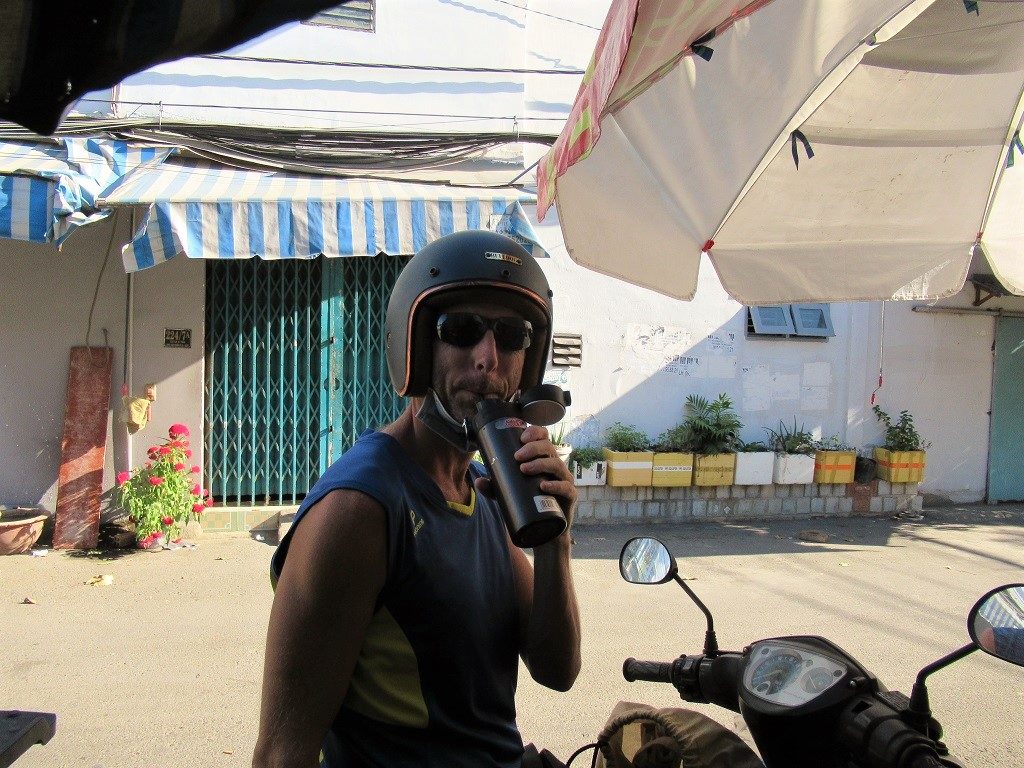
My reusable metal straw is easy & practical to use at roadside juice vendors, like this one in Saigon
Reusable Plastic Food Box:
As I’m often on the road, most of my meals are either take-out or eaten at street-side food vendors. Even when I’m in Saigon, I tend to eat out most of the time, because food is inexpensive and very good. I use my plastic food container as an alternative to the polystyrene boxes and plastic bags that take-out food from street vendors or local eateries usually comes in. To do this, when I make my order, I ask the vendor to put the food into my food box: ‘Vui lòng bỏ vào hộp này‘ (Please put it in this box). My food box is a good, compact size, but has plenty of space for my food, and the lid seals perfectly so I don’t have to worry about heat or sauce escaping. Because it’s a Lock & Lock product, the box is extremely well-made and durable.
Using a food container is such a simple thing to do, and yet the benefits, in terms of reducing single-use, are huge. In Saigon, and especially when I’m on road trips, I’ll eat at least three take-out meals and/or snacks each day. For every meal or snack there’s at least one polystyrene box and/or plastic bag. So, in one day on the road, I’d consume around three single-use boxes and bags. Just like the straws, in one year I’d use thousands of these boxes and bags, most which will find their way into a landfill, into the waterways and oceans, or strewn around the country, blown by gusts of wind to some final resting place in the forests and fields, where they will slowly break down into their plastic particles to be consumed, in one form or another, by some living creature, and thus become part of the food chain. (For details about where to purchase reusable plastic food containers, see Where to Buy them).
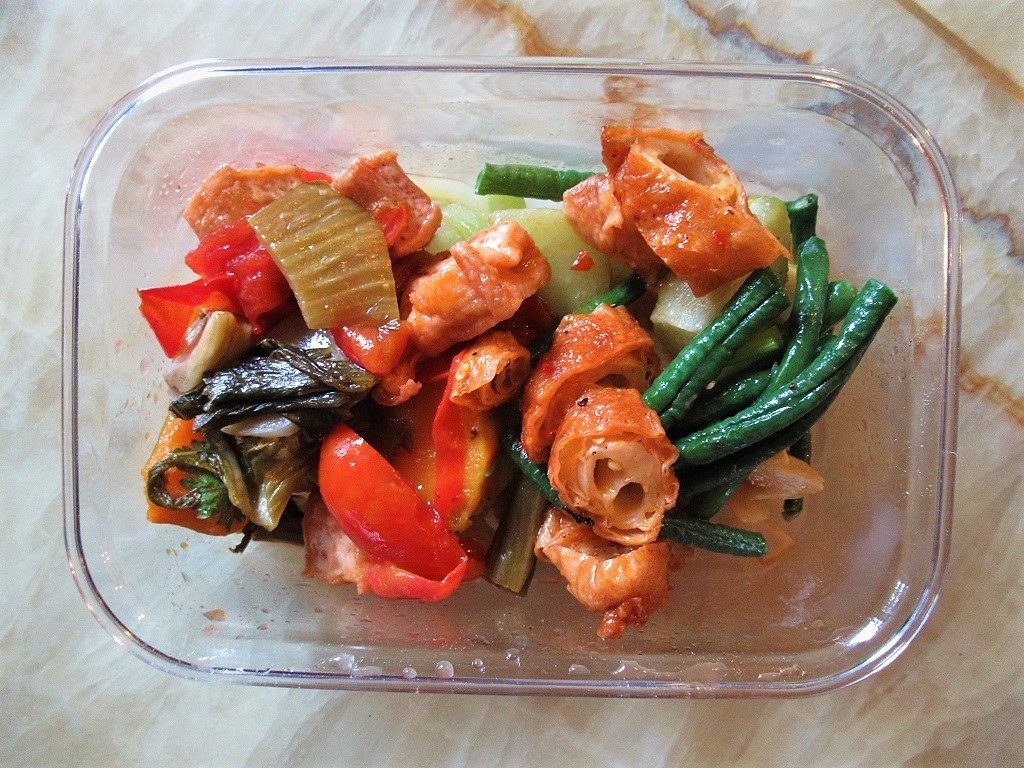
I take my reusable food container to my local vegetarian eatery & fill it with veggies & tofu
Hot/Cold Insulating Thermos:
My thermos is a beautiful thing. Just like my metal straw, my thermos has become quite dear to me. Partly this is because it’s a very good, well-made product that performs its function perfectly: of all Lock & Lock’s products, their thermoses are probably their best-known, and best-loved items. But it’s also partly because my thermos is something that’s always with me. Whether I’m on the road, working in a cafe, relaxing at home, at a bar, teaching English in a classroom, or camping in the forests, my thermos is never more than an arm’s length away. When you think about it, there aren’t many items that you can say that of. It’s also partly because of the nature of its function: keeping liquid hot or cold, keeping me hydrated, and, in some cases, keeping me healthy. I use my thermos for iced and hot coffees, fruit and vegetable juices and, occasionally, for gin cocktails. What’s more, I like the way it looks: sturdy but slender, strong but light-weight, unassuming yet highly efficient, practical, portable, and well-proportioned. It has the feel and look of a well-made object: like it will last forever. I also enjoy drinking from it: for me, it makes drinks taste better; certainly better than from a plastic cup.
To use my thermos, I either fill it before I leave the house, or ask the cafe staff or juice vendors to use my thermos instead of a plastic receptacle: ‘Vui lòng bỏ vào bình này‘ (Please put it in this flask). I’ve never had a problem with this, even at big-brand chains in shopping malls. Like the straws, the impact it’s had on reducing my single-use consumption is massive: before my thermos, I’d used tens of thousands of plastic cups over the years I’ve been living in Vietnam. Now, I just use one: my thermos. (For details about where to purchase a thermos, see Where to Buy them).

My reusable flask is never far from me & gets used every day: like here at a juice vendor in Phan Rang
Reusable Cloth Bags:
I have three cloths bags and pouches: one for my straws and straw-cleaning brush, one for my thermos and food container, and another large one which fits the other two inside, so I can carry it all together. I also have a couple of cloth handkerchiefs for wiping dry my reusable items after they’ve been washed. My cloth bags are all light-coloured with a slightly textured but soft surface. If they get dirty, they’re easily washed. By using my cloth bags, I can keep all my reusable items together in one place, but separated from one another. This is very helpful: All I need to do is remember my big bag whenever I go out, and then I know I’ve got all my reusable kit with me. Like a wallet or a purse, I know the order of my reusable kit within my cloth bags, and this makes the process of using them much smoother. For example, when I stop by the roadside in Saigon on my motorbike to buy a fresh orange juice from a street vendor, all I need to do is get my bag out, hand over my flask and take out my straw. If you can organize your reusable items efficiently, you’re much more likely to make use of them everyday. (For details about where to purchase reusable cloth bags, see Where to Buy them).
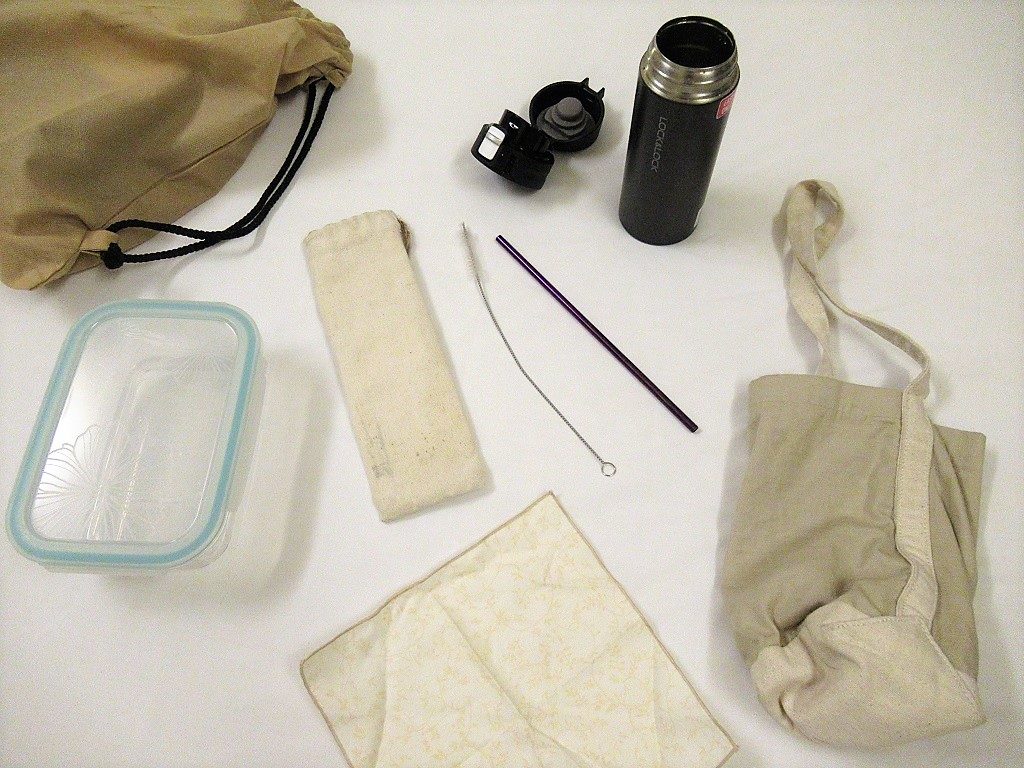
My cloth bags have made it easier for me to carry & organize my reusable kit
Disadvantages:
In general, it’s been surprisingly easy to integrate my reusable items into my daily routine, both in Saigon and on the road. Most of the disadvantages below are insignificant and trivial, but nonetheless worth mentioning. Like most new things, after the first two weeks, using these items became second nature: just another part of my day-to-day lifestyle. (For details about where to purchase these items, see Where to Buy them).
Click an item from the list below to read more about it:

Picnic trash left on the forest floor by the sea on a popular Vietnamese beach: all of it is single-use plastic
So far, I haven’t found any real disadvantages to using my metal straw. Washing it (with the specially designed straw brush) is mildly inconvenient: it requires water and 30 seconds of my time. Other than that, it’s just a matter of remembering to bring my straw and brush (in my cloth pouch) wherever I go. But once this became part of my daily routine – just like brushing my teeth or remembering my keys – it was no longer an issue. At first, it was very easy to forget or accidentally throw away my straw: I was so used to single-use straws that my default action was to discard it after use. For this reason, it’s a good idea to buy two metal straws: one as a spare.
I do, however, think that other reusable straws are far less convenient or sustainable compared to the metal straws. Bamboo straws, for example, are nowhere near as durable as the metal ones: they tend to rot, especially on the inside and around the rim, and add an unwanted flavour to drinks. Bamboo straws are elegant and good-looking, but they just aren’t practical. Lemongrass straws, too, aren’t particularly practical: they are essentially single-use (you can’t really use them more than once), and they rarely satisfy the function of a straw: little holes invariably leak most of the liquid bound for your lips before it reaches them. Lemongrass straws are pretty and trendy but, unless I’m missing something, those sprigs of aromatic lemongrass would be put to better use in one of the many broths, stews and marinades that Vietnamese cuisine boasts. (For details about where to purchase reusable straws, see Where to Buy them).
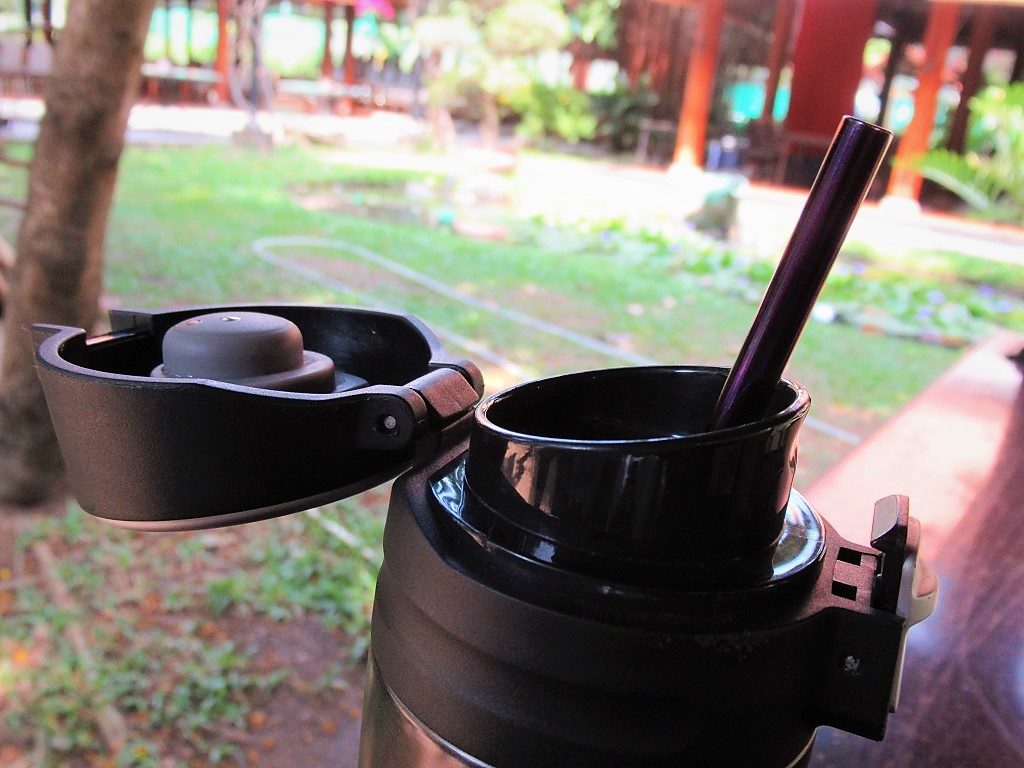
I love my reusable metal straw: however, I can’t say the same of other reusable straws, such as bamboo
Reusable Plastic Food Box:
I can’t think of any significant problems or disadvantages with using my plastic food container. I have to remember to take it with me when I go out, of course, but it doesn’t take that much effort. Just like the reusable straws, it’s a matter of getting into the habit of taking the container with me and making the ‘effort’ to use it. And, just like the straws, it’s necessary to wash the box after use, which is easily done. My box is light and compact, so there’s no problem in carrying it around. It feels a bit weird at first: handing over a food container at local rice eateries, cafes, and even restaurants. But I soon got used to it. And, I’m already finding that more and more people – locals, expats and travellers alike – are doing the same thing: it’s not unusual anymore. (For details about where to purchase reusable plastic food containers, see Where to Buy them).

My reusable plastic food container has been great so far: I just need to remember to bring it with me
Hot/Cold Insulating Thermos:
Rather absurdly, the only disadvantage with my thermos is that it works too well. The insulation is so good that hot drinks take too long to cool down enough for me to drink them (I suppose my mouth has a low threshold for heat) and cold drinks stay so cold that they practically freeze. I’m exaggerating, of course. But the real issue, for me at least, is with Vietnamese-style iced coffee. Traditional iced coffee in Vietnam is made with the robusta bean, which has a higher caffeine content and is more bitter than the arabica bean. To cut the bitterness, sugar (or condensed milk for white coffee) is added. Nevertheless, the drink is still very strong – too strong for many Western palates. However, I’ve developed a taste for the subtleties of Vietnamese-style robusta coffee, especially iced, black, with a little sugar. But my enjoyment of this coffee relies on letting the ice melt a bit, thus diluting the bitterness, sweetness, and strength of the drink, whilst also making it a longer drink. When I use my Lock & Lock thermos for this style of coffee, the ice cubes don’t melt at all, leaving me with a short, strong, bitter-sweet coffee. Oh, the agony. (For details about where to purchase a thermos, see Where to Buy them).
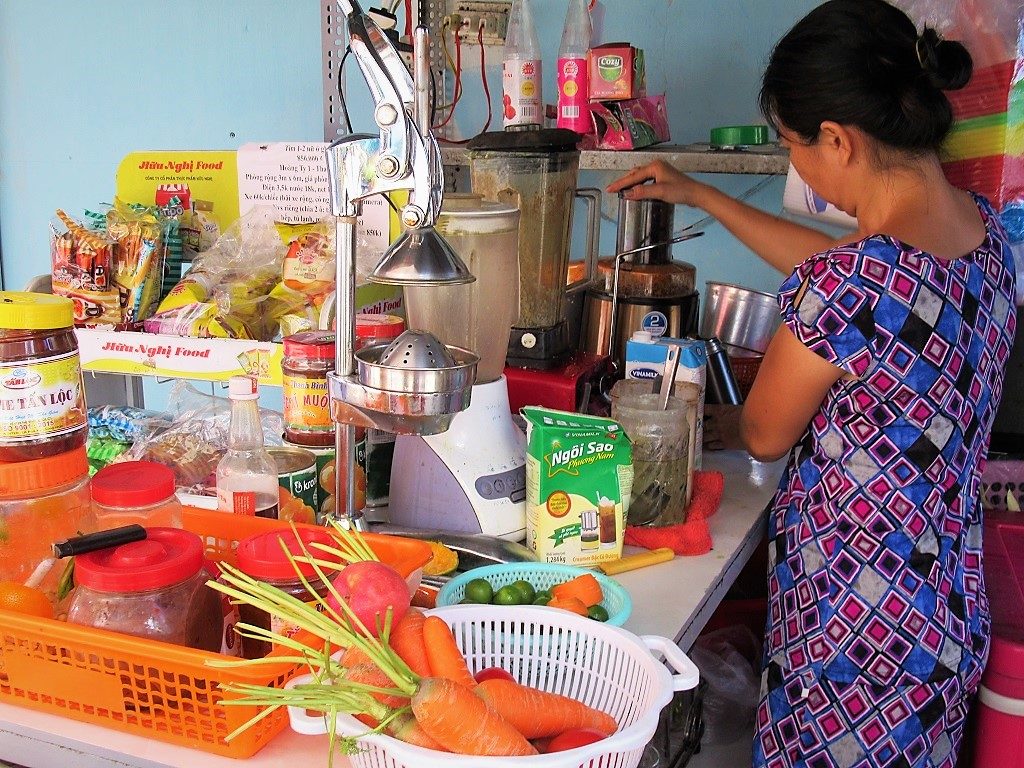
My local juice vendor, Ms Dieu, making me a carrot juice & pouring it into my reusable thermos
Reusable Cloth Bags:
My cloths bags do exactly what they’re supposed to do. But I think it would be a good idea for some of the stores specializing in reusable and sustainable products to offer a kit-bag (soft ones and hard ones) designed specifically for carrying an array or set of reusable items. Perhaps they’re already on sale somewhere; I just haven’t found them yet. (For details about where to purchase reusable cloth bags, see Where to Buy them).

It would be great if there were a range of bags specifically designed for carrying a reusable kit
Where to Buy them:
Shopping for sustainable or reusable products is getting much easier in Vietnam. In the big cities, there are now dozens of stores dedicated to products which reduce single-use plastic and our reliance on daily items that lead to environmental degradation. Such shops are growing in number every year. But you don’t necessarily have to buy reusable products at a specialist shop: Vietnam’s traditional wet markets, and increasing number of department stores, are also good places to look for inexpensive items that can be used over and again (even if that was not their intended purpose).
Disclosure: I have no affiliation with the products or companies mentioned in this article. My content is always independent: I do not receive payment of any kind in exchange for writing about any company, services, or products.
Click an item from the list below to read more about it:

Single-use plastic trash washed up with the tide on a beach in Vietnam: a common sight
There’s an increasingly large selection of shops and outlets in Vietnam’s cities that sell reusable straws. Whether metal ones, like my own, or bamboo and other materials, reusable straws are cheap and plentiful in big cities, such as Saigon (Ho Chi Minh City), Hanoi and Danang. However, outside the larger cities, it may be difficult to find them, in which case you can just keep a regular plastic straw and reuse it as much as possible before it gets damaged. Also, many hotels, guest houses, and restaurants now use (and sell) reusable straws, especially in popular tourist areas, such as Phu Quoc, Mui Ne, Nha Trang etc. As mentioned above, I much prefer the metal straws. These come in a few different colours and generally cost a fraction more than the bamboo ones. Whichever straw you choose, it’s a very small investment, especially for a product that’ll be used countless times and save hundreds of plastic straws in the process. All kinds of reusable straws only cost between 20,000-50,000vnd ($1-$2) each. (You can also buy a straw-cleaning brush, which is very useful, indeed.) Places to buy or order reusable straws include:
- Zero Waste Saigon (www.zerowastesaigon.com)
- Lai Day Refill Station (www.laidayrefill.com)
- The Organik House (www.theorganikhouse.com)
- Coconam (www.facebook.com/Underthecocos)
- Green Around the Corner (www.facebook.com/greenaroundthecorner)
- Tap Hoa La Xanh (www.facebook.com/pg/taphoalaxanh)

There are now quite a lot of places to buy reusable straws in the big cities, but not in the countryside
Reusable Plastic Food Box:
Although Tupperware-style reusable plastic food boxes are available in many stores and markets all over Vietnam, I bought mine from Lock & Lock, a high-quality South Korean brand which has outlets in many large shopping malls. Plastic food containers are often sold in sets, but it’s also possible to buy them individually. For my personal use, I only need one, small-sized food container. The Lock & Lock boxes come in all sizes and are extremely well-made, durable and tightly-sealed using easy, quick-release clips. Prices at Lock & Lock represent good value for money, especially considering the quality and durability of the product: expect to pay between 150,000-300,000vnd ($7-$14) for an individual container, depending on the size. Food containers from local markets are a lot cheaper, but the quality is not as good, which means they won’t last as long. Considering the whole point of using food containers is to cut down on the consumption of polystyrene and plastic boxes, it makes a lot of sense to invest in a quality container so that you can use it multiple times before needing to buy a new one.

Lock & Lock make excellent reusable plastic food containers, but they’re also available in the markets
Hot/Cold Insulating Thermos:
Thermoses are available in many stores in Vietnam’s cities. But, ask a local, and they’ll invariably recommend Lock & Lock, a South Korean brand which manufactures many of its products in Vietnam. Indeed, Lock & Lock items do have the look and feel of genuine quality, and my experience with their products so far has been excellent. In most of Vietnam’s large cities, you’ll find Lock & Lock stores in malls and department stores. In particular, Lock & Lock always have a presence in Vincom shopping malls across the nation. I personally dislike the environment at Vincom centres, but it’s worth facing the crowds at these consumer cathedrals to get your hands on a high-quality Lock & Lock thermos. There are many types to choose from. I like a small, portable-sized thermos with a hinge lid so that I can put my metal straw it in while on the go. (I find that flasks which only have a screw-top lid are impractical for drinking while walking or riding.) The cost of Lock & Lock thermoses is quite reasonable, considering the quality of the product. Expect to pay between 300,000-600,000vnd ($14-$28). This is particularly good value because Lock & Lock thermoses are quality products which will last a long time and be able to be used over and again, which is, of course, the whole point: a one-time purchase for hundreds (if not thousands) of plastic cups- and glasses-worth of hot and cold drinks. That’s what this is all about.

Lock & Lock have a great range of well-made reusable thermoses, available at department stores in cities
Reusable Cloth Bags:
Cloth bags, or other reusable bags, such as woven bamboo, can be bought in most Vietnamese towns and cities. Local markets often have them for sale and so do many outlets in large department stores. But several shops, especially in Saigon, Hanoi and Danang, that specialize in reusable or sustainable products, have a range of particularly attractive cloth bags for sale. These bags are often designed specifically for carrying their reusable products, such as a cloth pouch for straws, cloth sacks for thermoses and food containers, or larger bags for shopping items. They are well-made, easy to wash, light-weight, and generally inexpensive, ranging from 100,000-300,000vnd ($4-$14). Here are some stores to buy them:
- Lai Day Refill Station (www.laidayrefill.com)
- The Organik House (www.theorganikhouse.com)
- Coconam (www.facebook.com/Underthecocos)
- Green Around the Corner (www.facebook.com/greenaroundthecorner)
- Tap Hoa La Xanh (www.facebook.com/pg/taphoalaxanh)
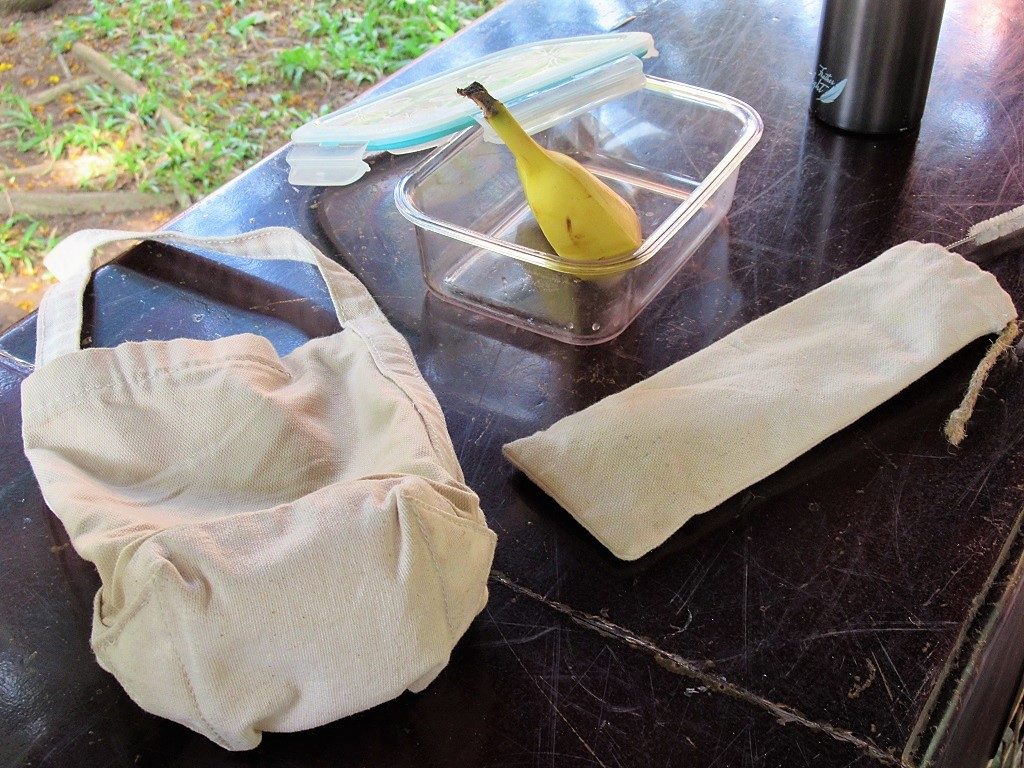
Reusable cloth bags can be bought at specialist shops or at markets & department stores
Disclosure: I never receive payment for anything I write: my content is always free and independent. I’ve written this guide because I want to: I think this issue is important and I want my readers to know about it. For more details, see my Disclosure & Disclaimer statements here
[Back Top]

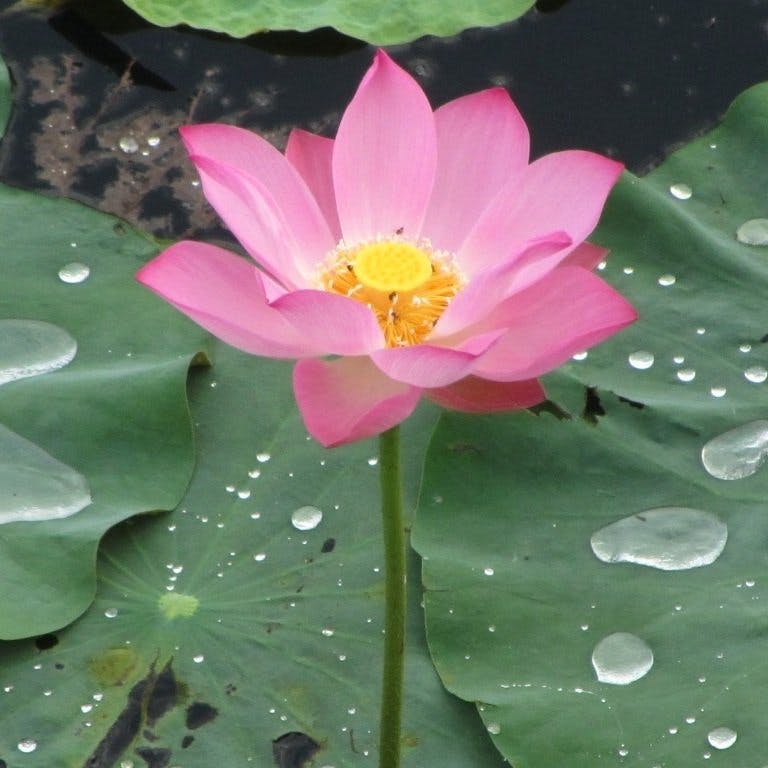
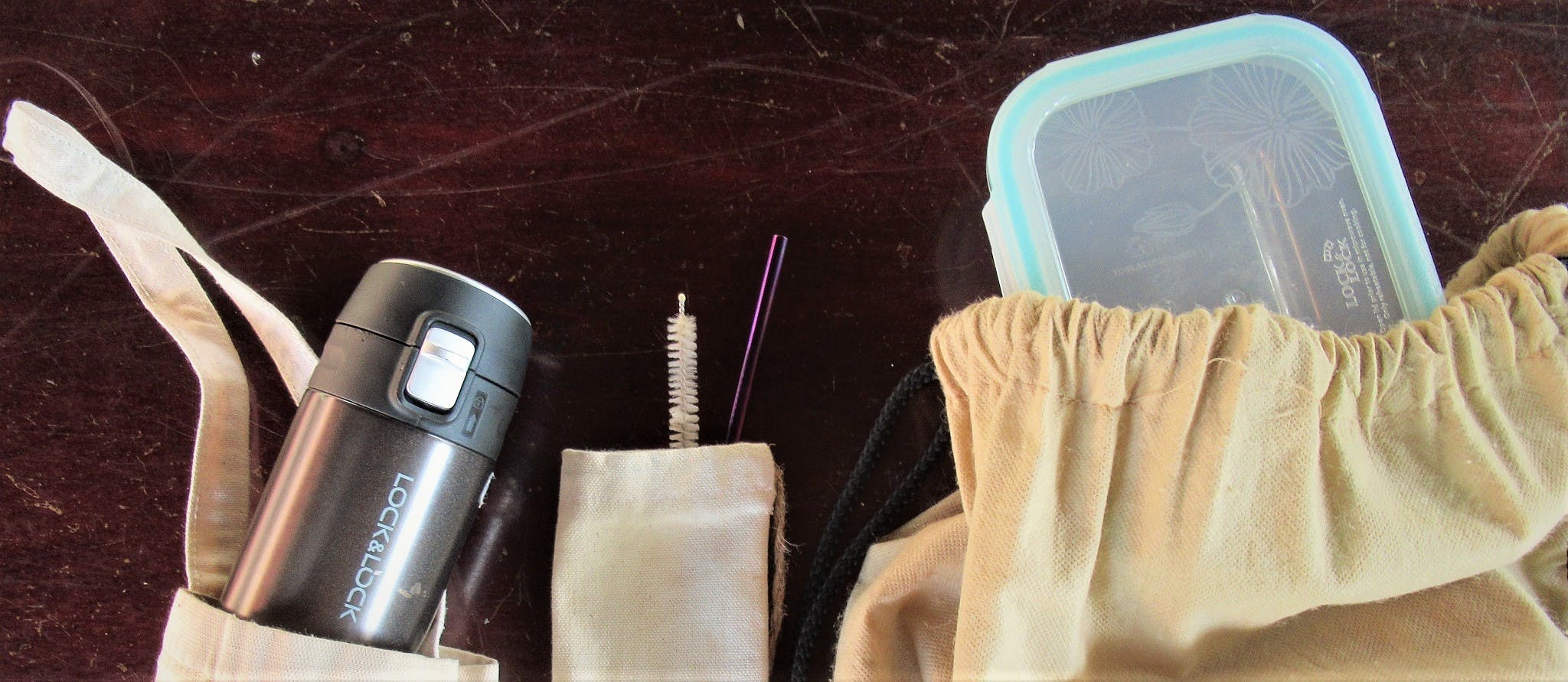
It’s so disheartening.
Aside from the animal neglect and noise issues, environmental degradation is right up there with what makes it difficult to live here.
Trash simply doesn’t belong in nature. Mass production of single use plastic is an environmental catastrophe, and the Vietnamese government will have to ensure that any ban is appropriately financed and enforced. A law on the role of books does nothing, as we have seen.
Some examples need to be set. Heavy fines for littering with possible jail time for repeat offenders or business owners. Punishment has a way of being as an excellent deterrent in Vietnam.
Hi Nicholas,
Yes, it is a very complicated situation.
Best,
Tom
This is great. I Was so conscious of the single use plastic in Vietnam. We went to a beach called ‘Bai Xep’ near Quy Nhon and it was covered in trash. It was a shame because the coastline was spectacular. It’s a big issue and the government in Vietnam need to do more to address this. I’m now Bali and there’s a big issue with it here on the beaches.
Hi Karen,
Yes, litter is a problem in many areas of Vietnam, especially along the coast. Bai Xep is usually quite clean, so it’s possible you were unlucky – perhaps the tides brought more trash onto the beach than normal. In addition, the government do take litter seriously and there are advertising campaigns and signage all over the nation encouraging people to respect the environment and not to litter. But it is a complicated issue and still a long way from getting significantly better.
Best,
Tom
This is great info, thanks! I just got to Vietnam and got a bike (I’m going to use several of your roadtrip maps) and I brought my thermos, water filter and mess tin. I would like to write on the cover “please only vegetables” in Vietnamese (or other way to say vegan, is ‘chay’ strict vegan or ovolacto?), do you happen to know how to say that? I trust written text more than my ear for tonal languages. Awesome blog!
Hi Lara,
Glad to hear you’ve got your kit ready 🙂
I think in general ‘ăn chay’ is considered ‘vegetarian’ rather than vegan. I think ‘vegan’ is ‘thuần chay’.
So on your food box you could write something like: tôi chỉ ăn chay/thuần chay – which means ‘I only eat vegetarian/vegan’.
I’m sure there’s a better way to say it, but this will do the job.
Tom
Hey Tom,
alittlebit.vn sells cloth bags (canvas, as well as great ones for taking to the market so that you get your fruits and veggies without plastic bags), reusable mugs, and straws (both metal and bamboo) in pouches that come with brushes. I’ve bought from them and I’m really pleased. Only downside (but also upside) is that they don’t have a ton of stock because they don’t want to produce more than is needed and wanted, so there is sometimes a delay if things are out of stock. Can’t complain too much, because that’s far better than overproduction and having items be thrown out!
-Rebekah
Thanks, Rebekah. I’ll check them out. It’s great to have so many places to choose from now, in Saigon and a few only cities, at least.
Tom
Great article! We are constantly picking up trash in beaches and national parks around Vietnam. It is very sad to see the amount of plastic being taken and discarded only a minute later.
We are traveling with pretty much the same kit. Only additions we have is chopsticks, metal cutlery and the Camelbak all clear UV water purifier bottle (I saw someone mentioned it earlier). Unfortunately I have just found out they have discontinued the all clear but there are alternatives such as the LARQ bottle and the steripen. We haven’t bought a single plastic water bottle in the last couple of years traveling around Asia – it’s great!
Hi Ariel,
That’s really great to hear, especially about the water. I’m in the process right now of getting a filter bottle. Just trying to decide which one. It really would make such a difference to me when travelling – as it is I consume about 2-3 1.5litre plastic water bottles each day.
Tom
When I started to travel outside Europe I got a Katadyn Filter. They do not make my model anymore but they have this one: https://www.katadyn.com/en/de/50536-8020425-katadyn-pocket-tactical
I never had a problem with the ceramic filter it uses.
Now I use this filter: https://sawyer.com/products/mini-filter/.
It is easy to use since you do not have to pump.
I only have a stainless steel bottle with a stainless steel top so I got an old pet bottle and cut it half way. Put a small hole in it and now I can stick the Sawyer filter right on top of the bottle and let gravity do the job.
Thanks, Marc.
This is really interesting. I’ll look into them and hopefully start using one soon.
Tom
We travel to VN often and are very disturbed by the trash situation.Yes, we all need to cut down on our singe use items, but I would like to point out that the power at be, i.e. the local government, needs to improve the infrastructure of trash collecting starting with providing trash cans at public parks, beaches, and have a system to collect and dispose of the trash. Everyone will then have a way to get rid of their trash responsibly. Let’s hope this will happen sooner rather later.
Hi Hong Tran,
Yes, you’re right to a certain extent. But there is actually a very extensive network of local, state-run trash collection, even in small, remote villages, and there are large information signs about how and why you should dispose waste properly, even in small fishing communities and islands. I’ve written a bit more about that here.
Thanks,
Tom
Thank you Thom. We must start this conversation here and help through our own actions.
A very timely and thoughtful post Tom. Thanks for putting this one out there. I was shocked at the heaps of plastic waste I saw on otherwise beautiful beaches near Tam Ky travelling south of Hoi An. But it’s not just Viet Nam, as you know, its a very serious problem worlwide. We are drowning in single serve plastic and need to ban these terrible consumer packaging items. The first step is for people like us to all set an example for others. Keep doing the right thing and show other travelers how to reduce consumption of waste materials!
Hi Scott,
Thank you. Yes, I agree, it’s a global problem and the more people who are going out of their way to avoid single-use plastic the sooner the idea and awareness will spread.
Tom
Great article! Thanks for giving such specific info on where to buy reusable items in Vietnam. I’ve been using a UV water purifier for 10 years to save plastic waste. I’ve got a Camelbac All Clear which comes with a 750 ml bottle and a purifier that can be recharged with an USB wall plug or via a power bank. Holds the charge forever and the light is designed to treat 10,000 bottles of water. I’ve been using mine for 6 years. UV kills everything, even viruses, which gives it a big advantage for countries with questionable water supplies. You can use it camping as well as long as the water as clear as weak lemonade or better.
Hi Michelle,
That sounds perfect – I really want to find one. I’ll start looking 🙂
Tom
I’m using a Water-to-go filter water bottle which you can just fill from your hotel bathroom tap instead of buying bottled water and the plastic waste that creates.
Hi Kieth,
Yes, that’s a great idea. I definitely want to have a go at that. It would be very convenient when on the road, too.
Tom
Hi Tom!
that is a good start! I got my metal straws in Thailand. They give you 3 straws and a cleaner for 25 Bath – less than 1 US $. One of the straws is thick so you can even slurp thick mango shakes.
I also use my own chopsticks – that saves a lot of single-use chopsticks as well. And if the restaurant only has plastic one’s mine work better. Have a stainless steel bottle – no insulation. Bring my own bags as well. Since 1989 I travel with a water filter so no need to get plastic water bottles as well. The one I have now is very small- the Sawyer Mini.
I Marc,
Great idea to travel with your own filter. We got one in our house recently, which I can use to refill old plastic bottles, but I never thought about getting a filter to travelling, too. I’ll look into that. I like the chopsticks idea also.
Tom
Thanks for the great article and offering us a way to travel a bit more responsibly. This is true even in my home town. Sometime indeed it feels like it won’t make a difference in the individual level, but every step helps, not just the actual plastic we don’t use, but the more invisible ripple of our actions and circle of influence. You write and share this article, hundreds of us are influenced by it, and so on. So it all matters.
Thanks, Noemi,
Yes, I definitely agree with you: little steps taken by millions of people certainly make an impact. And the example of others helps too, just as you say.
Tom
Well done Tom. Its good to see this important issue featured this week. The photos of beautiful places completely trashed are really sad. I might also add that many times we can reuse items that have been designed to be disposable although the more we use reusable items and set an example perhaps more people will do the same.
Thanks, John.
Yes, I agree about reusing items that weren’t necessarily designed for reuse – I mean even plastic straws needn’t be single-use.
Tom
Thanks for your guide Tom. It seems like awareness of these is really increasing lately. Hopefully that will trickle up into the F&B industry and even government level, as the problem is on such a massive scale that a few individuals going out of their way to avoid plastic won’t even make a dent.
Hi Benjamin,
Yep, I think you’re right about the growing awareness, including the F&B industry. I hope there will be visible signs of a change in general attitude to single-use plastic and how it’s discarded. Although it’s a much wider problem, a lot of the single-use plastic that one sees in Vietnam is actually discarded by individuals.
Tom
Hi Tom, enjoyed your article on reducing waste. I didn’t realise there were so many simple ways to cut down. We are shopping for our fresh food every day/second day and bought a couple of string bags like my granny used to have. So much better and easier to carry,
Craig
Hi Craig,
Great to hear you’ve been using the string bags – a couple of my friends do, too.
Yes, there are more and more reusable products and stores specializing in them in the big cities – the items in this article only scratch the surface.
Tom